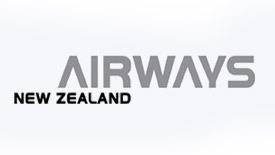LiquidPlanner: Can you talk a little bit about Airways New Zealand?
Tim Hughes: Airways New Zealand is an air traffic control provider for New Zealand. It’s a state-owned enterprise and acts like a private company, even though the government owns it. The law prevents government ministers from actually directing the company. There is a board of directors and a profit motive that acts like a profit company.
LP: How long have you been using LiquidPlanner?
 TH: About four years. Steve McConnell published an article in the beginning of 2007 or 2008 that got my attention and put me onto LiquidPlanner. Immediately after I read that article, our team started using LP, and we became so embedded after a month that we had to continue. Now we have about 30 people using it.
TH: About four years. Steve McConnell published an article in the beginning of 2007 or 2008 that got my attention and put me onto LiquidPlanner. Immediately after I read that article, our team started using LP, and we became so embedded after a month that we had to continue. Now we have about 30 people using it.
LP: Were you using anything before LiquidPlanner as far as project management software?
TH: We used a variety of solutions, like Microsoft Project for small projects, and also a corporate-scale resource management program covering the whole company.
LP: What was the main thing you were looking for?
TH: I particularly wanted the uncertainty management that LiquidPlanner provides. I wanted a project planning solution that would give me earned value reporting and would let me manage uncertainty to see where the risks lie. I also needed a reporting function.
LP: Can you talk about how you introduced the tool to your team? How did that process go?
TH: I discovered LiquidPlanner while everyone was on vacation, studied it, and decided that I wanted it. When they all got back from vacation, I told them about LiquidPlanner, and it took them well under an hour to decide they wanted it, too. We put the trial licenses in place and ran with it for the first three weeks. I stressed that everyone fill in their timesheets, and we settled work patterns and got the operating rules. It was important that employees were filling in their timesheets and saying what they were actually doing. We could then check the estimates to see that they were true. After that, the reporting in LiquidPlanner showed us how we were doing and how to keep our projects on track. That was all in the first three weeks. We were able to get everyone on board in a month. Everyone was totally receptive.
LP: Did people stick to the timesheet reporting?
TH: I think that in our case, the product worked exceptionally well because of our team dynamics and the way we work. A project management tool can’t solve the disabilities in a team or project. You need to know how to get stuff done in the first place. Because we are a safety organization, we have a blame-free environment and a just culture. Regardless of the outcomes, it is safe for people to report what is going on and it is an absolute requirement. Since people aren’t afraid to report, it makes filling time sheets easy. Sometimes people get worried about things they shouldn’t be worried about, but LiquidPlanner supports the organization process. We can change the plan in LiquidPlanner and do things in a different order, de-risk the process, and re-sequence the work.
LP: What are you working on now? Any big projects in LiquidPlanner?
TH: We’re working with OEMs, as well as enhancements to our own systems for improvement of service.
LP: What is your favorite feature besides estimations?
TH: Resource allocation.
LP: In terms of ROI or productivity, how much have you saved by using LiquidPlanner? Any stats or figures?
TH: I can tell you a story. We had a team working on a project, and when they put the plan and estimates into LiquidPlanner and produced the project plan, it was two times the budget and two times too late! This typically happened with this team because they didn’t have adequate support for their planning. They knew what needed to be done, so we told them to simplify and to change the tasks. We put the simplified tasks into LiquidPlanner and saw the time estimates change. We changed the job and used the tool to execute the project and keep track of how we were doing as we went along. The end result was a fixed time training requirement and a deadline that couldn’t be moved. LiquidPlanner transformed the way they performed and acted and changed what they did to meet the deadlines. You don’t argue with the estimates. You change your plan so that it will work. We actually ended up finishing the project a few days early.
LP: How much do you think it saved you?
TH: In that 24-hour period when we moved the project from being over-budget and over-schedule to on-time, the ROI was phenomenal. LiquidPlanner was so effective at being flexible. We wouldn’t have had the same visibility with other planning tools. This was a small scale project and the ROI was 30 percent of the project budget. LiquidPlanner paid for its entire licensing fee in one day.


